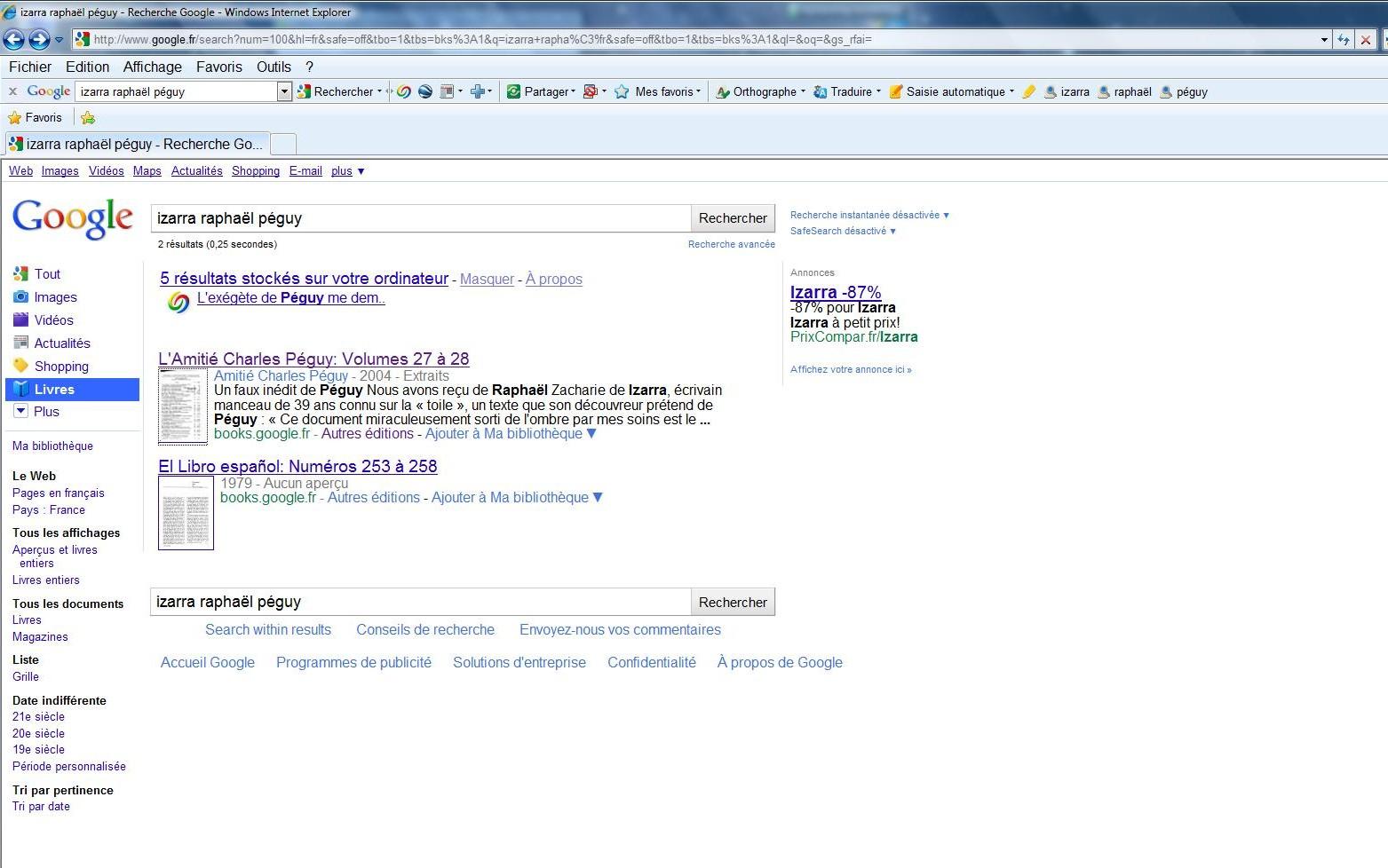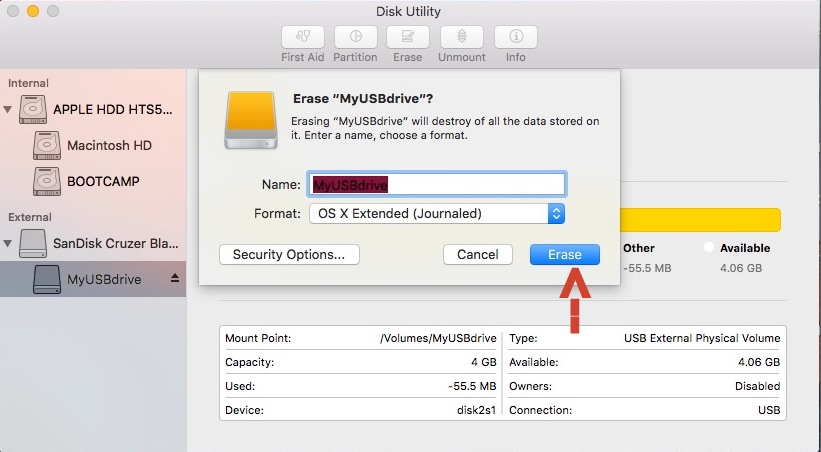- Format Usb Flash Drive Mac Terminal Adapter
- Usb Flash Drive Format Utility
- Format Mac Usb On Windows
- Format Usb Disk Drive
- Reformat Flash Drive Mac
Some flash drives have to be formatted first before you can store files on them. In this article, we are taking a closer look at the Disk Utility, which comes with all recent versions of the Mac OS X operating system and how you can use it to format USB drive on Mac. Format Flash Drive Mac with Disk Utility. Your Mac computer comes with a handy. In our use-case, this is the.ISO file. In MacOS, if you have a finder window open, you can drag and drop the.iso into the terminal and it will auto-fill this file path.' Of ' stands for 'output file' (a.k.a the destination file or location). For us, this is our USB drive, disk2. The specific path for external drives is in '/dev', hence /dev/disk2' bs ' stands for block size. Dd copies data in blocks rather than on a file by file basis (this is why it's so fast) and this command gives you. Part 1: How To Format Flash Drive On Mac. Here are the steps that you need to follow. Do these steps and you will then be able to format your flash drive on your Mac. Step 1: Go ahead and plug in your flash drive in the USB port on your Mac. Step 2: After that, go ahead and launch the Finder and click on your flash drive detected by your Mac.
by Shirly Chen, updated on 2019-05-10 to Mac Data Wipe
Before we recycle, lend, sell or abandon a USB flash drive, we should remove all the personal data on the USB flash drive. Formatting or reformatting is the efficient and secure way to remove all data on the USB flash drive. It is very simple to format USB flash drive on Windows PC. However, it is not easy to format the USB flash drive under Mac OS. Actually, if we want to format a USB flash drive under Mac OS, we should find USB flash drive formatting software at first. Here are top 5 USB flash drive formatting software tools for Mac to help in formatting, reformatting, erasing USB flash drive under OS X or macOS.
Best 5 USB flash drive formatting software for Mac
USB flash drive formatting software for Mac can help us format, reformat or erase USB flash drive on Mac. Here are top 5 USB flash drive formatting software for Mac on the market to help us securely & efficiently format USB flash drive under Mac OS.
NO.1 USB drive formatting software for Mac – DoYourData Super Eraser
DoYourData Super Eraser for Mac is a powerful & easy-to-use data erasure software. It will quickly format the USB flash drive on Mac and permanently erase all data on the USB flash drive. Once the USB flash drive is formatted by DoYourData Super Eraser for Mac, all data will be lost forever. You will get a brand new USB flash drive. It is strongly recommended to format USB flash drive on Mac with DoYourData Super Eraser for Mac before you sell, donate, lend, give away your USB flash drive. Free download DoYourData Super Eraser for Mac >>
NO.2 USB drive formatting software for Mac – Disk Utility
If you only want to format the USB flash drive on Mac, Disk Utility is the best choice. Just run this built-in application on your Mac, and use it to erase the USB flash drive. However, the data on the formatted USB flash drive could be recovered by data recovery software.

NO.3 USB drive formatting software for Mac – Start Menu for Mac
This start menu for Mac allows Mac users to format hard drive or external device on Mac. Download and install it on your Mac. Launch it from Launchpad, 'Disk Manager' can help you format USB flash drive on Mac. The formatted data also can be recovered by data recovery software.
NO.4 USB drive formatting software for Mac – Disk Wiper for Mac
Disk Wiper for Mac is another data erasure application. It will format USB flash drive under Mac OS and remove all data information on the USB flash drive permanently.
NO.5 USB formatting software for Mac – MacClean360
MacClean360 is all-in-one Mac cleaner and manager. It offers a tool “Disk Manager”. It can help Mac users securely and quickly format USB flash drive under Mac OS. Very easy to use and 100% safe.
The top 5 USB flash drive formatting software for Mac can help us easily and securely format USB flash drive under Mac OS. Just select one of them to format USB flash drive under Mac OS. DoYourData Super Eraser for Mac is the best USB flash drive formatting software for Mac. It is strongly recommended to use this data formatting software to format USB flash drive under Mac OS. Then the USB flash drive could be able to securely reused, recycled, resold, donated, etc. Free download DoYourData Super Eraser for Mac here:
Related Articles
Permanently and securely erase data from hard drive or external storage device under Mac OS with certified data erasure methods.
Hot Articles
These advanced steps are primarily for system administrators and others who are familiar with the command line. You don't need a bootable installer to upgrade macOS or reinstall macOS, but it can be useful when you want to install on multiple computers without downloading the installer each time.
What you need to create a bootable installer
- A USB flash drive or other secondary volume, formatted as Mac OS Extended, with at least 12GB of available storage
- A downloaded installer for macOS Big Sur, Catalina, Mojave, High Sierra, or El Capitan
Download macOS
- Download: macOS Big Sur, macOS Catalina, macOS Mojave, or macOS High Sierra
These download to your Applications folder as an app named Install macOS [version name]. If the installer opens after downloading, quit it without continuing installation. To get the correct installer, download from a Mac that is using macOS Sierra 10.12.5 or later, or El Capitan 10.11.6. Enterprise administrators, please download from Apple, not a locally hosted software-update server. - Download: OS X El Capitan
This downloads as a disk image named InstallMacOSX.dmg. On a Mac that is compatible with El Capitan, open the disk image and run the installer within, named InstallMacOSX.pkg. It installs an app named Install OS X El Capitan into your Applications folder. You will create the bootable installer from this app, not from the disk image or .pkg installer.
Use the 'createinstallmedia' command in Terminal
- Connect the USB flash drive or other volume that you're using for the bootable installer.
- Open Terminal, which is in the Utilities folder of your Applications folder.
- Type or paste one of the following commands in Terminal. These assume that the installer is in your Applications folder, and MyVolume is the name of the USB flash drive or other volume you're using. If it has a different name, replace
MyVolumein these commands with the name of your volume.
Big Sur:*
Catalina:*
Mojave:*
High Sierra:*
El Capitan:
* If your Mac is using macOS Sierra or earlier, include the --applicationpath argument and installer path, similar to the way this is done in the command for El Capitan.
After typing the command:
- Press Return to enter the command.
- When prompted, type your administrator password and press Return again. Terminal doesn't show any characters as you type your password.
- When prompted, type
Yto confirm that you want to erase the volume, then press Return. Terminal shows the progress as the volume is erased. - After the volume is erased, you may see an alert that Terminal would like to access files on a removable volume. Click OK to allow the copy to proceed.
- When Terminal says that it's done, the volume will have the same name as the installer you downloaded, such as Install macOS Big Sur. You can now quit Terminal and eject the volume.
Use the bootable installer
Format Usb Flash Drive Mac Terminal Adapter
Determine whether you're using a Mac with Apple silicon, then follow the appropriate steps:
Apple silicon

Usb Flash Drive Format Utility
- Plug the bootable installer into a Mac that is connected to the internet and compatible with the version of macOS you're installing.
- Turn on your Mac and continue to hold the power button until you see the startup options window, which shows your bootable volumes and a gear icon labled Options.
- Select the volume containing the bootable installer, then click Continue.
- When the macOS installer opens, follow the onscreen instructions.
Intel processor
Format Mac Usb On Windows
- Plug the bootable installer into a Mac that is connected to the internet and compatible with the version of macOS you're installing.
- Press and hold the Option (Alt) ⌥ key immediately after turning on or restarting your Mac.
- Release the Option key when you see a dark screen showing your bootable volumes.
- Select the volume containing the bootable installer. Then click the up arrow or press Return.
If you can't start up from the bootable installer, make sure that the External Boot setting in Startup Security Utility is set to allow booting from external media. - Choose your language, if prompted.
- Select Install macOS (or Install OS X) from the Utilities window, then click Continue and follow the onscreen instructions.
Learn more
For more information about the createinstallmedia command and the arguments that you can use with it, make sure that the macOS installer is in your Applications folder, then enter the appropriate path in Terminal:
Format Usb Disk Drive
- Big Sur: /Applications/Install macOS Big Sur.app/Contents/Resources/createinstallmedia
- Catalina: /Applications/Install macOS Catalina.app/Contents/Resources/createinstallmedia
- Mojave: /Applications/Install macOS Mojave.app/Contents/Resources/createinstallmedia
- High Sierra: /Applications/Install macOS High Sierra.app/Contents/Resources/createinstallmedia
- El Capitan: /Applications/Install OS X El Capitan.app/Contents/Resources/createinstallmedia
Reformat Flash Drive Mac
A bootable installer doesn't download macOS from the internet, but it does require an internet connection to get firmware and other information specific to the Mac model.